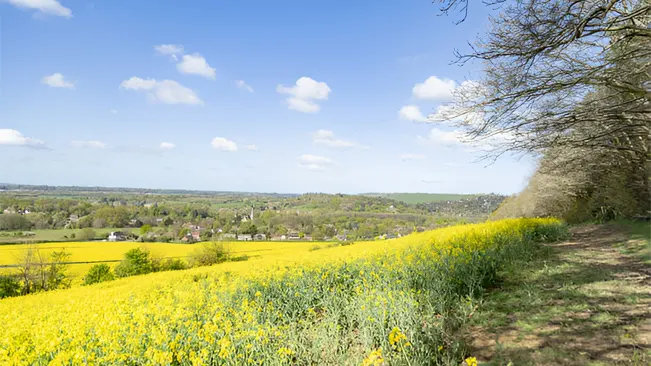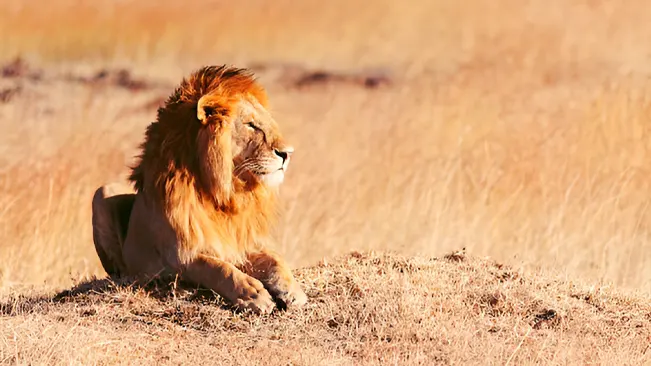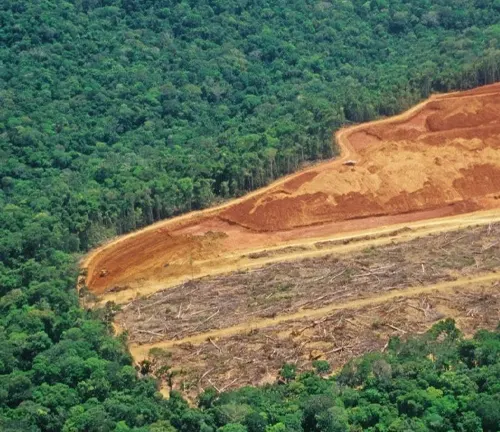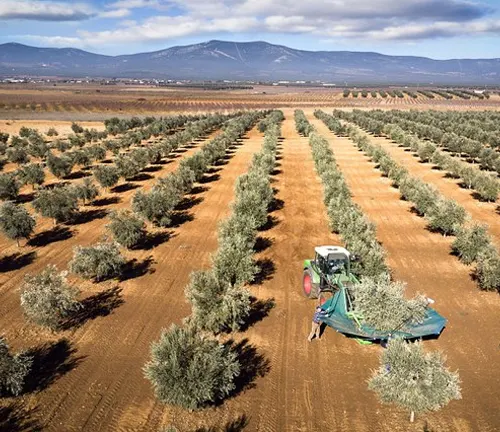Edge Habitat Management: Balancing Biodiversity and Human Impact
- August 6, 2024
- 0 comment
Ecotones, also known as edge habitats, are transitional zones where two different ecosystems meet, such as the boundary between a forest and a grassland. These areas are characterized by a unique set of conditions that support a diverse array of species. However, they are particularly vulnerable to human impact, necessitating careful management to balance biodiversity conservation with human activities. This article delves into the intricacies of managing these areas, exploring their ecological significance, challenges, and strategies for sustainable management.

List of Edge Habitat Management:
- Increased Species Diversity
- Resource Availability
- Ecosystem Services
- The Amazon Rainforest Edge
- Urban-Wildland Interfaces in North America
- Agricultural Landscapes in Europe
Ecological Significance of Edge Habitats
These biologically rich areas support a high level of biodiversity due to the overlapping of species from adjacent ecosystems. They often provide unique resources, such as food and shelter, which attract a variety of wildlife.
Increased Species Diversity
The mixing of species from different ecosystems leads to higher biodiversity by creating unique environmental conditions that support a wide range of organisms. Species from both adjoining ecosystems coexist, leading to a richer variety of flora and fauna. Some species, known as edge specialists, are particularly adapted to these transitional zones and may rely exclusively on the resources and conditions found there.

For instance, these areas often provide a mix of food sources, nesting sites, and microclimates that are not available in the core areas of either ecosystem. This diverse array of habitats can support various species with different ecological requirements, contributing to overall biodiversity.

Additionally, the dynamic nature of these zones, where conditions such as light, moisture, and temperature can vary significantly over short distances, creates niches for a variety of organisms. This complexity fosters interactions among species, such as predation, competition, and mutualism, further enhancing the ecological richness.
Resource Availability
Often exhibit increased resource availability due to the unique and varied environmental conditions present at the junction of two ecosystems. These transitional zones typically receive more sunlight than the interior areas of dense forests, allowing for a higher rate of photosynthesis and a greater diversity of plant species.

The proximity to different ecosystems also means access to a broader range of water sources, from streams and ponds to groundwater, which supports a diverse array of flora and fauna. Additionally, the soil often benefits from the accumulation of organic matter from both ecosystems, leading to richer and more varied nutrient profiles.
This increased availability of light, water, and nutrients fosters a robust and diverse plant community, which in turn supports a wide variety of herbivores, pollinators, and higher trophic levels, enhancing the overall biodiversity and ecological productivity of these areas.
Ecosystem Services
habitats play crucial roles in sustaining ecosystem health and functionality through various ecosystem services. One of the primary services is nutrient cycling, where the decomposition of organic matter from both adjacent ecosystems enriches the soil with essential nutrients, fostering plant growth and maintaining soil fertility.

Additionally, they are hotspots for pollination activities due to their high plant diversity, attracting a wide array of pollinators such as bees, butterflies, and birds. This pollination supports the reproduction of both wild and agricultural plants, contributing to biodiversity and food security. Moreover, these areas act as buffer zones, mitigating the impact of external disturbances such as wind, fire, and human activities on core habitats.
They absorb and dissipate the energy from these disturbances, protecting the more sensitive interior ecosystems. This buffering capacity also helps in controlling erosion and maintaining water quality by trapping sediments and pollutants before they can reach streams and rivers. Overall, the ecosystem services provided by these areas are vital for maintaining ecological balance, supporting biodiversity, and enhancing the resilience of ecosystems to environmental changes.
Case Studies
The Amazon Rainforest Edge
In the Amazon, these zones are created by deforestation for agriculture and logging. Management efforts focus on reforestation, sustainable land-use practices, and creating biological corridors to reconnect fragmented habitats. The use of agroforestry systems, which integrate trees and crops, helps to maintain biodiversity while supporting local livelihoods.

Urban-Wildland Interfaces in North America
Urban-wildland interfaces, where cities meet natural landscapes, present unique challenges and opportunities for managing these areas. Strategies here include creating green belts, implementing fire management practices, and promoting native landscaping in urban areas to support biodiversity and reduce the risk of wildfires.

Agricultural Landscapes in Europe
In Europe, agricultural landscapes often create extensive transitional zones where fields meet hedgerows, woodlands, or grasslands. Management practices here include maintaining and restoring hedgerows, which provide critical habitats for a variety of species.

Challenges in Managing Edge Habitats
- Habitat Fragmentation
Human activities such as agriculture, urban development, and infrastructure expansion often lead to habitat fragmentation, creating more edge habitats but reducing core areas critical for some species. - Invasive Species
Edge habitats are often entry points for invasive species, which can outcompete native species and alter ecosystem dynamics. - Human-Wildlife Conflict
Proximity to human activities can lead to increased human-wildlife conflicts, such as crop raiding by animals or predation on livestock. - Climate Change
Changes in climate can alter the structure and function of edge habitats, impacting species composition and ecosystem services.
Strategies for Sustainable Edge Habitat Management
Effective edge habitat management requires a holistic approach that integrates ecological knowledge with practical conservation and land-use practices.
- Landscape-Level Planning
Adopting a landscape-level approach ensures that edge habitats are considered within the broader context of ecosystem connectivity and integrity. This involves creating buffer zones, wildlife corridors, and maintaining habitat patches. - Adaptive Management
Implementing adaptive management practices allows for flexible responses to environmental changes and new information. Regular monitoring and evaluation are critical components of this approach. - Invasive Species Control
Active management to control and eradicate invasive species is essential to protect native biodiversity. This can involve mechanical removal, chemical treatments, and biological control methods. - Promoting Native Vegetation
Encouraging the growth of native plant species in edge habitats can enhance their ecological value and provide better support for native wildlife. - Community Involvement
Engaging local communities in conservation efforts ensures that management practices are sustainable and culturally acceptable. Education and awareness programs can foster a sense of stewardship among community members. - Mitigating Human-Wildlife Conflict
Implementing measures such as fencing, deterrents, and compensation schemes can reduce conflicts and promote coexistence between humans and wildlife.
Conclusion
Edge habitat management is a complex but crucial aspect of biodiversity conservation. By balancing ecological needs with human activities, it is possible to maintain the unique biodiversity and ecosystem services provided by these transitional zones. Effective management requires a multifaceted approach, incorporating scientific research, adaptive practices, and community involvement. As human impacts on the environment continue to grow, the importance of sustainable edge habitat management will only become more critical in preserving the planet’s biodiversity.
Frequently Asked Questions (FAQs)
- What is an edge habitat?
An edge habitat, also known as an ecotone, is a transitional zone where two different ecosystems meet, such as the boundary between a forest and a grassland. These areas support a unique mix of species from both ecosystems and often have higher biodiversity. - Why are edge habitats important for biodiversity?
Edge habitats are important for biodiversity because they provide a variety of resources and conditions that support a wide range of species. The mix of environmental conditions and resources attracts species from both adjoining ecosystems and creates unique niches for edge specialists. - What are some common challenges in managing edge habitats?
Common challenges in managing edge habitats include habitat fragmentation, the spread of invasive species, human-wildlife conflicts, and the impacts of climate change. These challenges require careful and adaptive management strategies to address. - How does habitat fragmentation affect edge habitats?
Habitat fragmentation increases the proportion of edge habitat relative to core habitat, which can be detrimental to species that require large, undisturbed areas. Fragmentation can also increase exposure to invasive species and human disturbances. - What strategies are used to manage invasive species in edge habitats?
Strategies to manage invasive species in edge habitats include mechanical removal, chemical treatments, biological control, and promoting the growth of native vegetation. Effective management often involves a combination of these methods. - How can edge habitats help mitigate the effects of climate change?
Edge habitats can help mitigate the effects of climate change by acting as buffer zones that protect core habitats from extreme weather events. They also support species migration and adaptation by providing diverse environmental conditions and resources. - What role do edge habitats play in nutrient cycling?
Edge habitats enhance nutrient cycling by facilitating the decomposition of organic matter from both adjacent ecosystems. This process enriches the soil with nutrients, supporting plant growth and maintaining soil fertility. - How do edge habitats support pollination?
The high plant diversity in edge habitats attracts a wide array of pollinators, such as bees, butterflies, and birds. These pollinators help in the reproduction of both wild and agricultural plants, contributing to overall biodiversity and food security. - What measures can be taken to reduce human-wildlife conflicts in edge habitats?
Measures to reduce human-wildlife conflicts in edge habitats include installing fencing, using deterrents, creating buffer zones, and implementing compensation schemes for losses caused by wildlife. Engaging local communities in conflict mitigation efforts is also crucial. - How can local communities be involved in edge habitat management?
Local communities can be involved in edge habitat management through education and awareness programs, participatory decision-making processes, and sustainable land-use practices. Community involvement ensures that management strategies are culturally appropriate and socially sustainable.

Evan Bennett
Forestry AuthorEvan Bennett brings over a decade of expertise in forestry wildlife management to the forefront, specializing in habitat conservation, biodiversity, and human-wildlife interaction. Evan's work ensures harmonious coexistence between wildlife and human communities through effective and sustainable practices. Continuously engaging in research and workshops, Evan stays at the cutting edge of wildlife management advancements. As a trusted advisor and contributor to leading environmental journals, Evan is dedicated to preserving the natural world for future generations.










Leave your comment